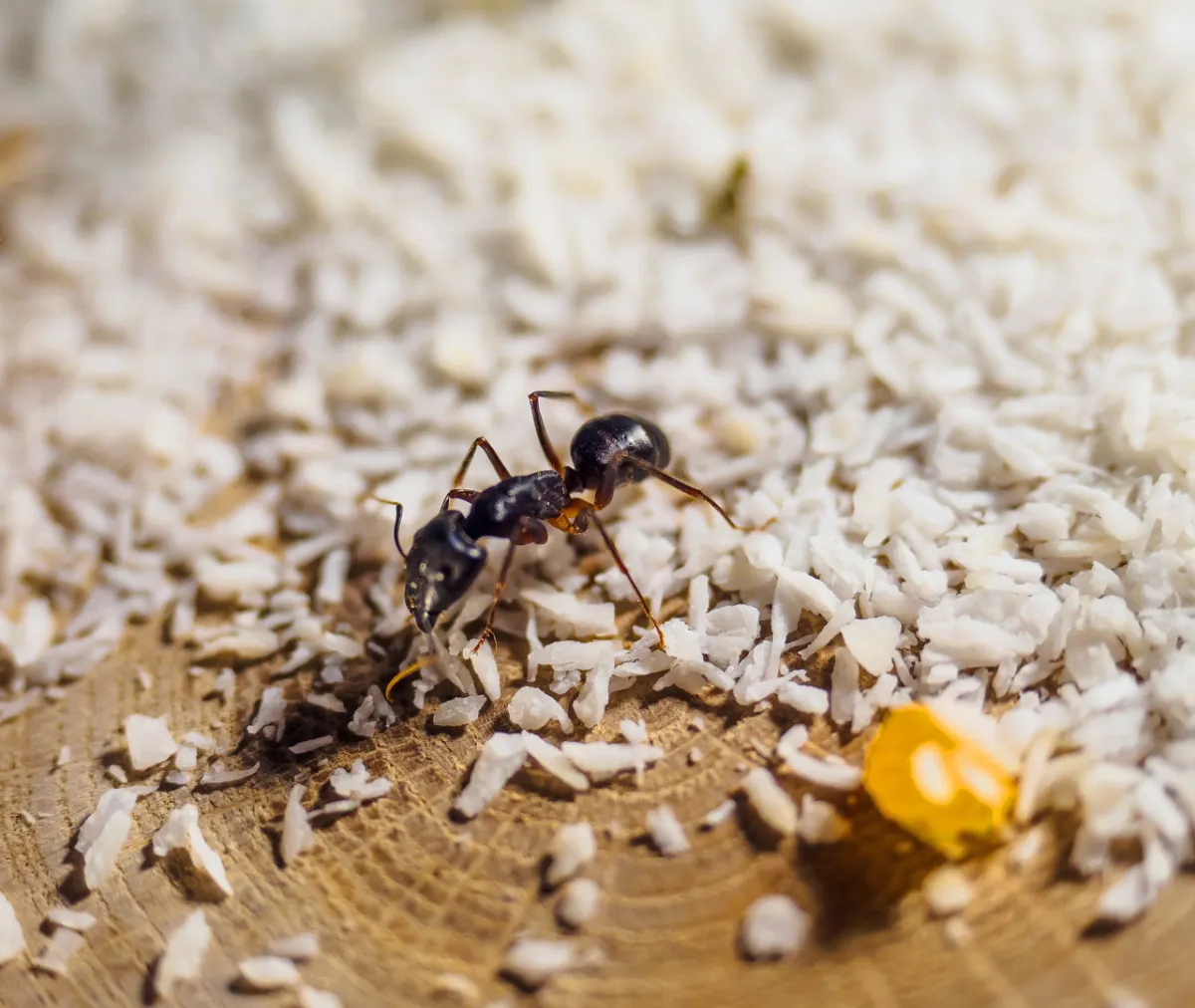
Can Seasonal Changes Really Affect Your Pest Problems?
Yes—seasonal changes can significantly impact pest problems, with different pests becoming more active or invasive depending on the time of year. Temperature shifts, rainfall, and changes in food availability all influence how and where pests behave, breed, and invade homes.
Ignoring these seasonal patterns can lead to sudden infestations, hidden pest issues, and property damage that could have been prevented with a proactive, year-round pest control strategy.
How Each Season Affects Pest Activity
Spring: The Season of Awakening
What Happens: Warmer temperatures bring many pests out of winter dormancy. Insects like ants, termites, spiders, and wasps become active, start to forage for food, and reproduce rapidly. Spring rains can also drive pests indoors as they seek dry shelter.
Common Issues:
Ant invasions, especially in kitchens and bathrooms where moisture and food are present.
Termite swarms looking to establish new colonies near your home’s foundation.
Increased spider activity indoors as they follow insect prey.
Why It Matters: Early infestations can grow quickly if not controlled. Spring is the ideal time for preventative pest treatments and inspections to catch issues before they escalate, saving you money and stress down the road.
Summer: Peak Pest Season
What Happens: Rising heat speeds up insect lifecycles, causing pest populations to surge. Outdoor pests often enter homes seeking food, water, and cooler shelter during heatwaves. Increased outdoor activities and open doors provide easy access for pests to enter homes unnoticed.
Common Issues:
Mosquitoes breeding in standing water around yards.
Flies, gnats, and fruit flies becoming a nuisance in kitchens and garbage areas.
Carpenter ants and termites actively causing structural damage.
Ticks and fleas on pets, in yards, and potentially inside your home.
Why It Matters: Pest populations can explode if left unchecked during summer. Preventive measures like eliminating standing water, sealing entry points, and using targeted treatments can reduce the risk of infestations during the busiest pest season of the year.
Fall: The Great Migration Indoors
What Happens: As temperatures drop, many pests begin seeking warmth and shelter indoors to survive the winter months. Rodents, stink bugs, cockroaches, and spiders all look for hidden areas in your home to overwinter safely.
Common Issues:
Rodents nesting in attics, walls, garages, and basements.
Stink bugs and boxelder bugs clustering on exterior walls and sneaking into attics or living spaces.
Cockroaches moving closer to food and water sources indoors.
Why It Matters: Pests that enter your home in the fall may remain hidden, reproduce, and continue causing problems throughout winter. Taking proactive steps to seal cracks, repair screens, and inspect common entry points during fall is essential for reducing winter pest issues.
Winter: Out of Sight, Not Out of Mind
What Happens: Some pests go dormant, but many, including rodents and cockroaches, remain active inside warm homes. Winter is a time when pests are less visible, but they can still cause significant damage and health concerns while hiding behind walls or in appliances.
Common Issues:
Rodents chewing wires and insulation, creating fire hazards.
Cockroaches hiding in kitchens, bathrooms, and behind appliances.
Spiders seeking shelter indoors during cold months.
Why It Matters: Just because you aren’t seeing pests doesn’t mean they aren’t present. Winter is a key time to monitor hidden activity and perform treatments in areas where pests commonly hide to prevent unnoticed damage and contamination.
Why Seasonal Pest Control Is Important
Each season brings unique pest challenges, requiring a year-round pest control strategy to keep your home consistently protected. Professional pest control companies often offer seasonal treatment plans designed to target pests proactively based on their behavior and environmental triggers.
Benefits of seasonal pest control include:
✅ Preventing infestations before they start by addressing seasonal pest trends.
✅ Reducing emergency treatments and the stress of dealing with sudden infestations.
✅ Keeping your home cleaner, healthier, and pest-free year-round.
✅ Adapting treatment strategies to weather patterns and specific pest behavior.
For example:
Spring treatments may focus on perimeter sprays to stop ants and early termite activity.
Summer treatments may target mosquito breeding areas and active insect infestations.
Fall may emphasize sealing entry points and rodent prevention.
Winter checks can identify hidden pests, ensuring they don’t cause damage while out of sight.
Final Thoughts
Seasonal changes don’t just affect your wardrobe—they directly impact your pest control needs, too. Pests adapt to environmental conditions, and your prevention methods should adapt alongside them.
Whether it’s sealing cracks before fall, eliminating mosquito breeding areas in summer, or monitoring hidden nests in winter, staying ahead of seasonal pest patterns can save you money, stress, and damage to your home.
If you’ve noticed recurring pest problems during certain times of the year, it’s not your imagination—it’s seasonal. A proactive approach through year-round pest control is your best defense, ensuring your home stays safe and pest-free no matter what season it is.